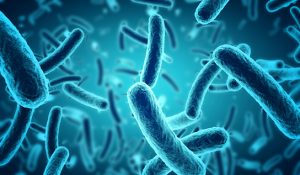 Researchers at the Berkeley Lab have found that your skin is covered in not only bacteria, but also archaea.
Researchers at the Berkeley Lab have found that your skin is covered in not only bacteria, but also archaea.
What is archaea, you ask? Differentiated from bacteria in the 1970s, it forms one of the three branches of the scientific tree of life (Bacteria, Archaea, and Eukarya). It is a microbe that survives in extreme conditions such as the Antarctic ice and in hot springs and, apparently, also on your skin. This discovery was made as recently as 2011 and there has not been much research done on human-inhabiting archaea until now.
Advertisement
There are innumerable different kinds of archaea and those that are found in extreme environments are very different from those newly found on the human body. So far, scientists have discovered archaea in the human gut and in the human microbiome.
The research team included members from the Department of Energy’s Lawrence Berkeley National Laboratory and the Medical University of Graz. As part of the study, the researchers looked into the genetic and chemical components of the participants, ranging in age from one to 75 years. The participants with the largest number of archaea on their skin were people under 12 and over 60.
There was a five to eight times difference between the number of archaea found in middle-aged people and those over 60! Aside from age, the other major factor that seemed to influence the number of archaea found on the skin was dryness. People with dryer skin had more archaea than those with oily skin.
Biological sex did not have an effect on the levels of archaea found on the participants’ skin.
Up until this point, much scientific research has been focused on detecting and monitoring different kinds of bacteria and their effects on humans, simply because it is much easier to do so. For this study alone, the team required access to highly specialized equipment, without which their research likely could not have been completed. They used the Berkeley Lab’s infrared Advanced Light Source (ALS) to create a method that allowed them to very quickly determine whether a microorganism was bacteria or archaea. The researchers also said that up until now, the populations that have participated in archaea studies have lacked age diversity. This may be why there has previously been so little discovered on how age can affect archaea levels in humans.
An important thing to note is that the archaea that were newly found as part of the human microbiome are shown to be beneficial to human health, rather than detrimental, as some may have initially thought. They seem to form a part of our skin’s natural cleaning processes and reduce pH levels. Future studies will focus on the differences between human and environmental archaea, where the archaea are most prevalent on the human body, and whether they may play a role in skin conditions such as psoriasis (which there is no evidence of as of yet). There is still much to learn about this microbe’s role in the human microbiome.
